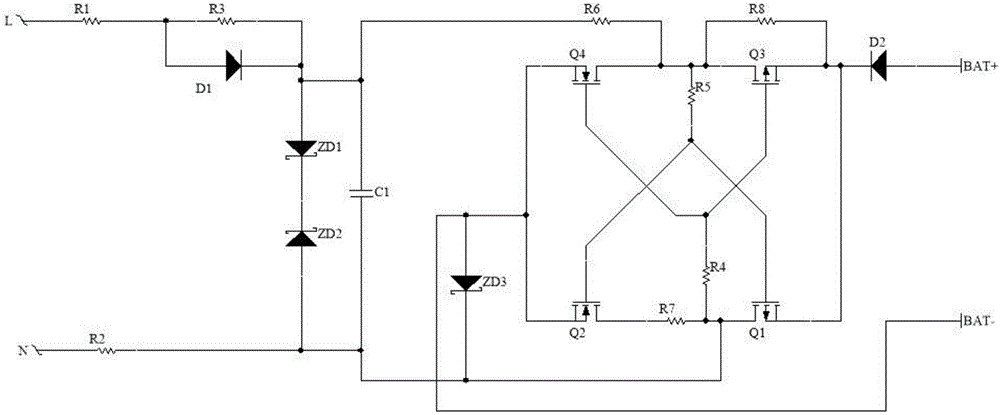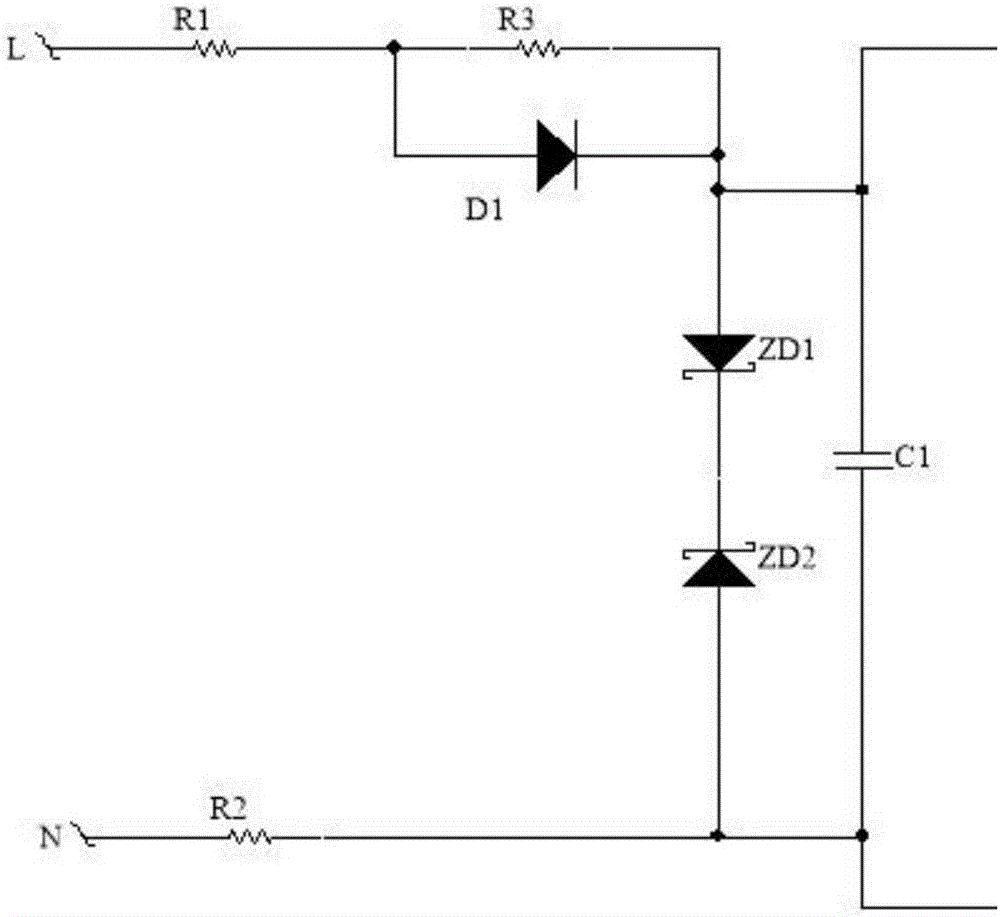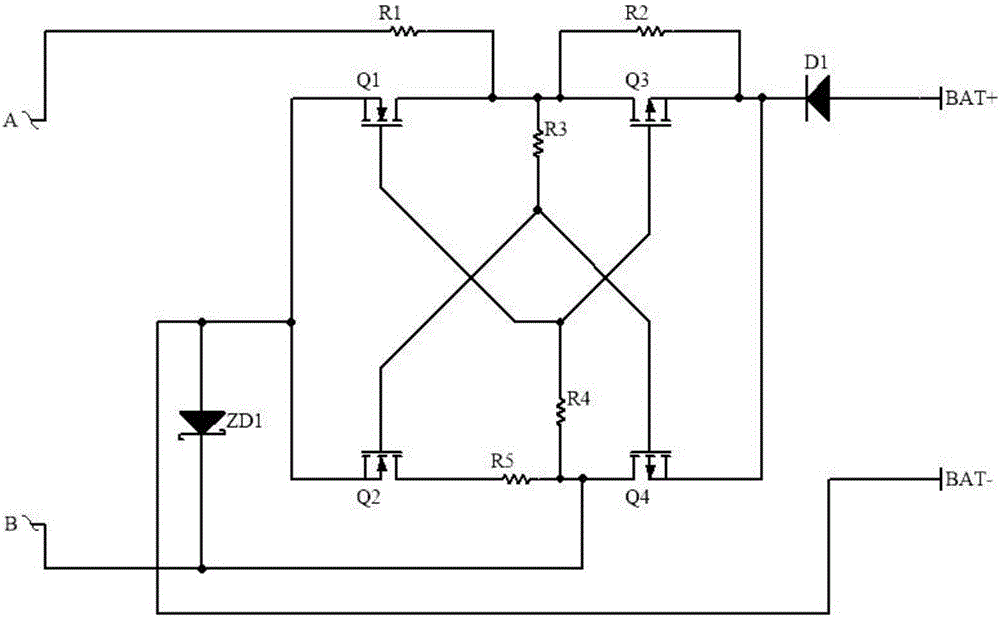Automatic recognition and conversion circuit for input end polarity of L/N line
An input terminal, automatic switching technology, applied in the field of emergency lighting, can solve problems such as misjudgment, and achieve the effect of wide application and flexibility
- Summary
- Abstract
- Description
- Claims
- Application Information
AI Technical Summary
Problems solved by technology
Method used
Image
Examples
Embodiment 1
[0024] by figure 2 The circuit shown is an example, which is a rheostat half-bridge rectifying and limiting circuit composed of resistors R1, R2, R3, diode D1, voltage regulator tubes ZD1, ZD2 and capacitors. The circuit connection relationship is that the first end of the resistor R1 is connected to the live wire L end, the second end of the resistor R1 is connected to the first end of the resistor R3 and the forward conduction input end of the diode D1. The resistor R3 is connected in parallel with the diode D1, and the second terminal of the resistor R3 and the output terminal of the diode are connected to the forward conduction input terminal of the voltage regulator transistor ZD1. The voltage regulator tube ZD1 and the voltage regulator tube ZD2 are reversely connected, the output terminal of the voltage regulator tube ZD1 is connected to the output terminal of the voltage regulator tube ZD2, the input terminal of the voltage regulator tube ZD2 is connected to the secon...
Embodiment 2
[0027] by image 3The circuit shown is an example, which is a bridge polarity conversion circuit composed of resistors R1, R2, R3, R4, R5, diode D1, voltage regulator tube ZD1, MOS tubes Q1, Q2, Q3, and Q4. The circuit connection relationship is that the first end of the resistor R1 is connected to the first output end A of the rheostat half-bridge rectifier limiting circuit, the second end of the resistor R1 is respectively connected to the drain of the MOS transistor Q1, and the first end of the resistor R3 , the drain of the MOS transistor Q3, and the first end of the resistor R2. The source of the MOS transistor Q1 is connected to the negative electrode BAT- of the battery, the input terminal of the regulator ZD1 and the source of the MOS transistor Q2; the gate of the MOS transistor Q1 is connected to the gate of the MOS transistor Q3 and the first end of the resistor R4. The second terminal of the resistor R3 is connected to the gate of the MOS transistor Q2 and the gat...
Embodiment 3
[0032] The rheostat half-bridge rectifying and limiting circuit and the bridge polarity changing circuit in Embodiment 1 and Embodiment 2 can be implemented independently in cooperation with their rectifying circuit or polarity changing circuit. This embodiment is a preferred embodiment of the combination of the rheostat half-bridge rectifying and limiting circuit and the bridge polarity changing circuit.
[0033] like figure 1 As shown, the two ends of the capacitor C1 in the rheostat half-bridge rectifying and limiting circuit are respectively used as two output ends. The output terminal of the capacitor C1 is connected to the first terminal of the resistor R6, and the second terminal of the capacitor C1 is connected to the output terminal of the regulator transistor ZD3, the second terminal of the resistor R7, the second terminal of the resistor R4 and the drain of the MOS transistor Q1.
[0034] According to its circuit principle, when the high-voltage alternating current...
PUM
 Login to View More
Login to View More Abstract
Description
Claims
Application Information
 Login to View More
Login to View More - R&D
- Intellectual Property
- Life Sciences
- Materials
- Tech Scout
- Unparalleled Data Quality
- Higher Quality Content
- 60% Fewer Hallucinations
Browse by: Latest US Patents, China's latest patents, Technical Efficacy Thesaurus, Application Domain, Technology Topic, Popular Technical Reports.
© 2025 PatSnap. All rights reserved.Legal|Privacy policy|Modern Slavery Act Transparency Statement|Sitemap|About US| Contact US: help@patsnap.com



